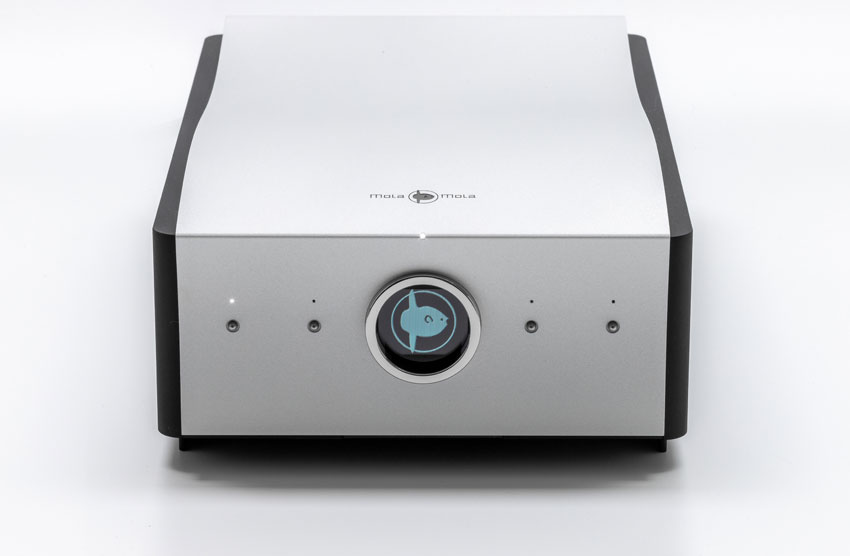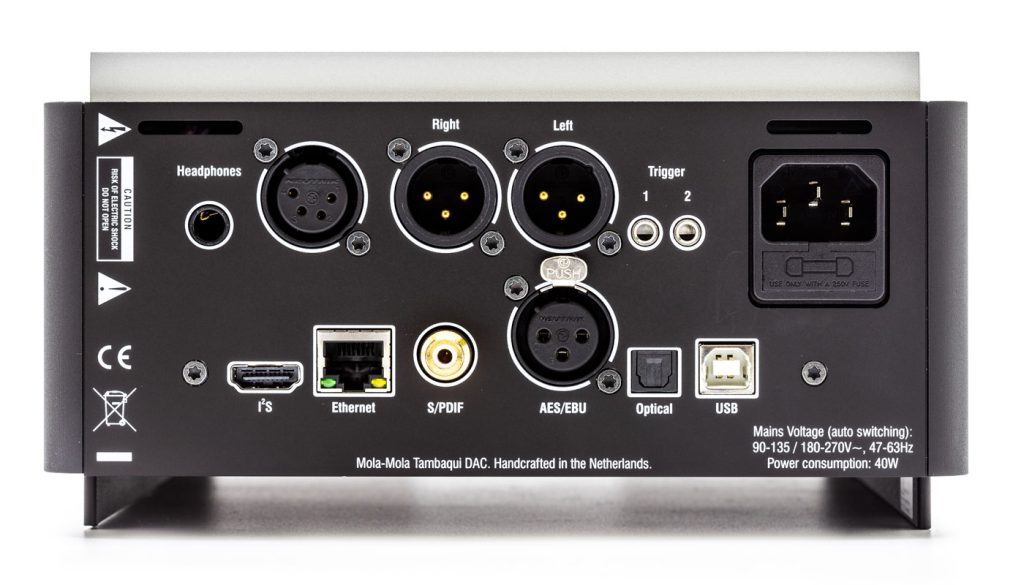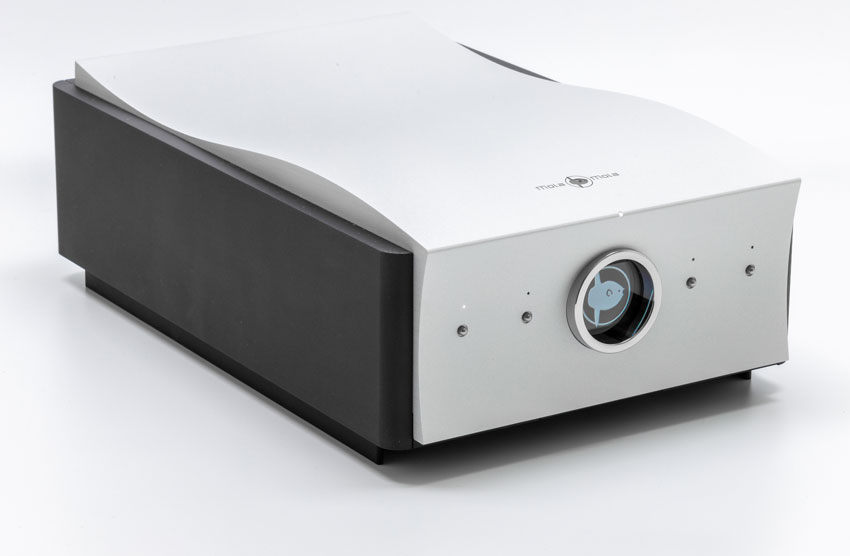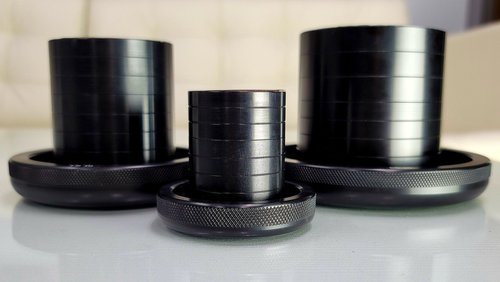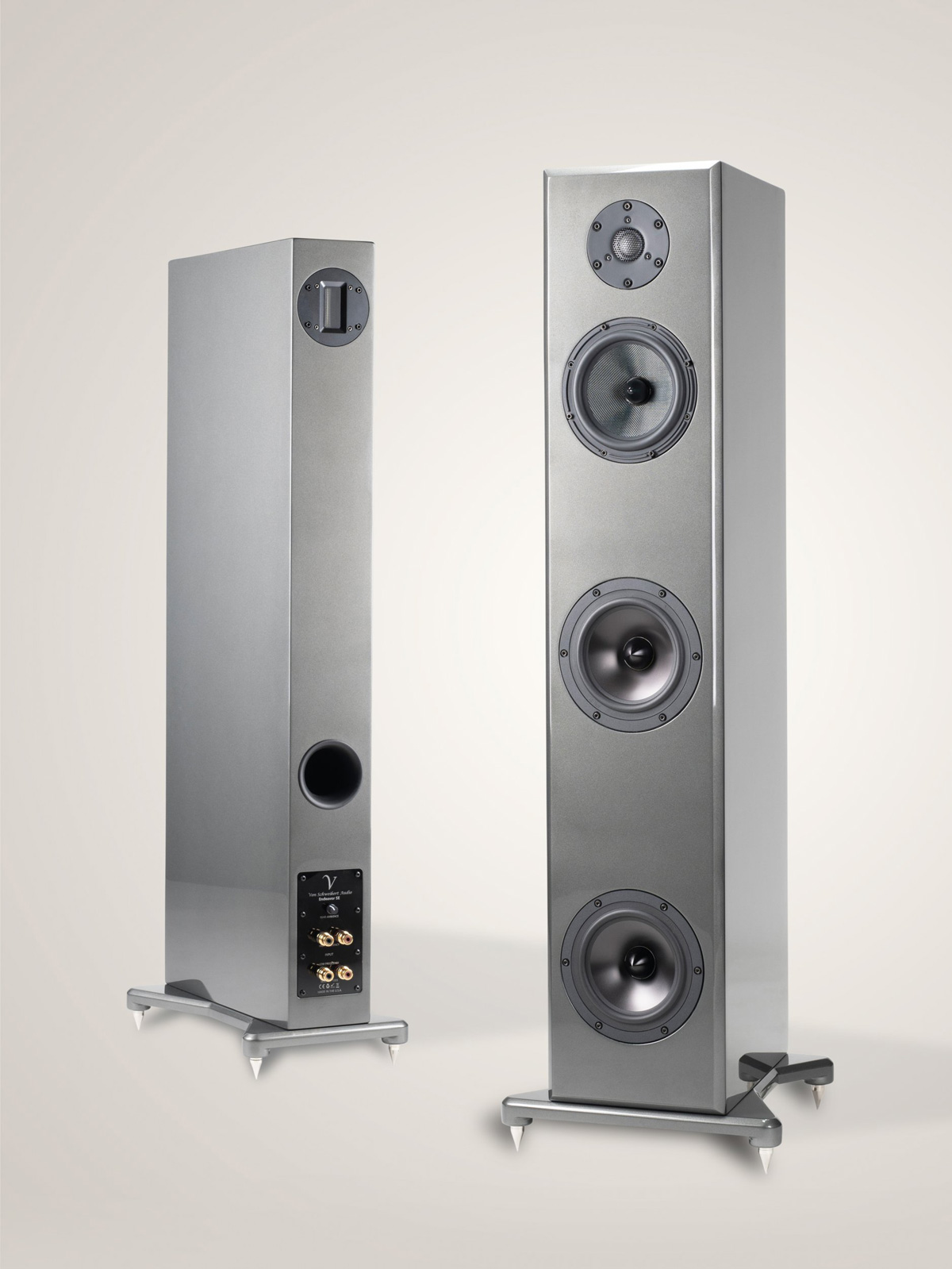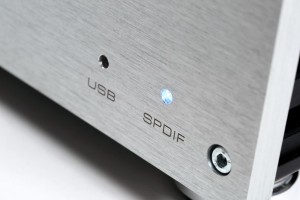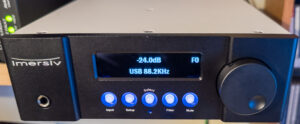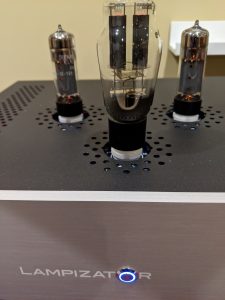Design as Art
Readers who've followed this column know that I hold Dutch firm Mola Mola's svelte line of hip twenty-first century electronics in extremely high regard. Elegant in form, compact in dimensions, pragmatically intuitive in set-up and day-to-day operation, and blessed with reference-caliber sonics, the Mola Mola lineup offers just about everything the audiophile apartment dweller could desire.
As luck would have it (plus a bit of cajoling now and then by Mr. GTT Audio & Video himself, Bill Parish), I remain one of the few reviewers, perhaps the only one, to have auditioned in house every product that Mola Mola makes: the Makua preamp (fitted with optional phono and DAC modules), the Kaluga mono amps, the delightful Kula integrated amplifier, and now, the transformative Tambaqui DAC. The Makua/Kaluga combo served as my reference electronics for almost two years, getting the best out of every speaker and source component to pass my way. In particular, the onboard DAC stood out for its ingenious combination of cutting-edge ergonomics and overall ease of use, stunning sonics, and delightful set-up flexibility.
Some time later, the demure Kula integrated blew my socks off. While not as powerful or dynamically turbo charged as the Makua/Kaluga combo, the little Kula charmed with its superior (in my humble opinion) naturalness, sweet and beguiling tonality, and deft amalgamation of solid-state speed and tube-like air and bloom. But for the absence of a preamp out (a must for any reviewer), I likely would have purchased the loaner as my long-term reference amp. Rumor has it that our own Greg Weaver fell as hard for the Kula as I did during his visit to GTT Audio & Video earlier this year.
The most recent Mola Mola midget to reside at Casa Jeffries, the Tambaqui DAC, a stand-alone unit that borrows heavily from (and builds upon) the onboard DAC module available as a cost-plus option for the Makua and Kula models, looks for all intents and purposes like a single channel of the Kaluga mono amp pair. But, instead of housing a state-of-the-art class D amplifier, the Mola Mola team have stuffed this wavy chassis (a firm design constant) with a stellar stand-alone conversion engine designed by none other than electronics wunderkind Bruno Putzeys.
Much of what I reported about Mola Mola's onboard DAC module (HERE) also applies to the stand-alone unit. The Tambaqui supports PCM to 384kHz/32-bit, and up to "Quad" DSD (DSD256). The two-board converter up-samples all incoming digital audio to 3.125MHz/32-bits and then converts same to noise-shaped PWM. The DAC boasts a stupefying 130dB SNR. For the streaming nuts out there (count me amongst your ranks) the DAC functions as a ROON endpoint. This makes system integration with Roon-friendly streaming services like Tidal and Qobuz an utter snap. For an earlier take on this remarkable unit, please check out our own Dr. David Robinson's detailed impressions HERE.
The separate chassis format allowed the design team to enhance connectivity and user-flexibility significantly over the onboard model, not to mention the sonic improvements that come from giving the DAC its own dedicated power supply. The rear panel sports a two-row connectivity architecture that wastes nary a millimeter of real estate. From left to right one finds two headphone jacks (which I did not use), one a 6.3mm quarter "incher," the other a balanced XLR 4-pin, left and right balanced outputs, two 3.5mm trigger outputs, all followed by the IEC power socket. An HDMI I2S port plus RJ45 network (Tambaqui is, as I mentioned above, a certified Roon endpoint), RCA S/PDIF, and XLR AES/EBU jacks, plus an optical Toslink port and a USB type B jack for USB audio and firmware updates round out the second row.
Like I said: everything a well-heeled apartment or tiny house-dwelling audiophile could ever want from a DAC, plus a little bit more.
Family Ties
Aside from the obvious physical similarities between Tambaqui and the rest of the Mola Mola line (namely, the immediately recognizable sculpted, bead-blasted aluminum chassis and decorative black side-panels), the DAC sounds like part of the family too. This translates into impressive transient fidelity, bass with real power and reach, pristine pitch delineation, and holographic sound staging. But the little Tambaqui adds something more to the mix that I find addictive.
For starters, the Tambaqui speaks with a smidgeon of tube-like warmth and body; favoring rich tone, air, and bloom over the sterile hyper-analytical approach that has become the desired norm in some high-end circles. Coupled with class-leading transient speed, the unit's striking tonal and timbral resoluteness gifts music of all sorts with a naturalness and ease that can prove addicting. A recent Qobuz find, the soundtrack to the standout 2015 Bryan Cranston vehicle Trumbo, highlights the little Mola Mola's supple, well-organized presentation and natural tonality. On the opening cut, "Eighty Words a Minute," (Trumbo: Original Motion Picture Soundtrack/Lakeshore Records), composer Theordore Shapiro’s sonic menagerie of jazz-scented melodic and harmonic color, rich textures, and bouncing rhythms, all meant to simulate Trumbo frantically pounding out a new screenplay on the typewriter keys of his typewriter, creates an intoxicating sense of musical urgency.
If the Tambaqui's rendition of texture and tone gently seduces, the unit's ability to sculpt images and sound-fields of remarkable depth, layering, and scale utterly and intoxicatingly entrance. A recording that has slipped into heavy rotation here at Casa Jeffries, singer/songwriter Anna Tivel's Blue World (Map Room Sessions) on Fluff and Gravy Records, boasts ethereal, gossamer-like images underscored by tons of atmospheric reverb and long, sumptuous decays. The little Mola Mola image "sculpts" with an almost tube-like dimensionality; meaning that it projects height, width, and depth cues far beyond the physical boundaries of the speakers (for this review, the outstanding Von Schweikert Endeavor Special Edition compact floor-standers).
Switching to percussionist/composer Joël Grare's eastern-scented "Nihavent" (from his stellar 2008 outing Paris-Istanbul-Shanghai on the Alpha label) only intensifies the effect, the recorded ambient field permeating into the room like an airy cloud of sound totally unburdened by the physical limitations of my compact listening space. Many thanks to my pal Greg Weaver for recommending this reference-caliber recording to me.
Based on the foregoing, one could well be forgiven for thinking that Tambaqui's magical way with tone, timbre, and staging approximates the performance of a very fine modern tube device. On the other hand, its marmoreal low-end extension and wallop, 130dB SNR-fueled dynamic clout, and pitch-black noiselessness are pure solid state, in all the best ways. As I have observed in my reviews of the Audionet and Mola Mola amplifiers, the very best solid-state gear today successfully amalgamates the dimensionality, natural warmth, and relaxing sense of engagement of the best valve electronics with the snap, crackle, extension, and sonic pop of the best solid-state. With Tambaqui you get none of the gray, sterile, dynamically lifeless bile typical of the worst that SS has to offer, only oodles of light, air, and astoundingly natural resolution of fine detail.
By the way, for the system set-up curious out there, I ran the digital output from my tried-and-true AURALiC G1 streaming transport into the DAC's USB type B input using Kubala-Sosna's excellent Sensation USB cable (reviewed HERE). The DAC fed the stunning Audionet Humboldt integrated amplifier. Once again, K-S cabling linked DAC to amp. Please note that I used GTT Audio & Video-provided XLR-to-RCA adaptors as the Tambaqui features only balanced outputs.
Parting Thoughts
After detailing what this tiny wunderkind gets right (and in many ways, remarkably so), let me spend a few minutes explaining what the Tambaqui doesn't do. First, it will not replicate the sound of a top analog rig like the Kronos Discovery turntable set-up that I waxed lyrical about back in the fall (HERE). Oh, it certainly approximates the ease and relaxed presentation that the best analog source components deliver, along with an almost full measure of "air" and bloom. I say "almost" because the Tambaqui will not deliver quite the preternatural "airiness" and instrumental bloom that the Kronos Discovery rig gifts in its suspended, counter-rotating platter-induced sleep (almost nothing else will), despite the Dutch midget's nevertheless remarkably relaxed, flowing, and natural sound.
The Tambaqui also can't exhume a recorded soundstage with quite the disarming holography of Captain Kronos. Again, this is not to say that the Dutch unit doesn't (and can't) image and soundstage with some of the best digital gear out there. It certainly can! On a richly orchestrated work like Mahler's Fourth (Mahler: Symphony No. 4 in G Major on Sony/Columbia), the digital transport/Tambaqui/amp combo effectively removes the speakers from the listening room/speaker interface equation. What the Kronos analogue rig does when reproducing orchestral war horses, and paired with reference gear of equal provenance, is even more amazing: it effectively removes the listening room from the playback experience.
But this coarse analogue versus digital comparison, however useful in absolute terms, misses the subtler, and in my opinion, more important point, namely this: carping on what great digital does and doesn't do versus analogue obfuscates and diminishes what great digital does well, and what DACs like Tambaqui do exceptionally well. I guess what I'm trying to convey in my own uniquely unartful way is that we stop saying silly things like "this digital device makes digital sources sound like the best that vinyl has to offer" and instead approach digitally reproduced sound (and the devices that make same possible) as a sui generis experience that usefully compliments the performance of the best analog rigs.
As I opined at the end of my Mola Mola Kula review (HERE), the Tambaqui is to DACs what the Kula is to toney integrated amps: a downsized mini-me solution to your 21st century digital component woes that sounds stellar. Like the Kula, the Tambaqui ain't cheap. But the musical performance and setup flexibility that it delivers makes its just south of $14K price seem sensibly fair (at least in high-end terms). This is, in no uncertain term, a state-of-the-art digital design for which no apologies need be made. I'm thinking that maybe I ought to get one for my system.
Only, don't tell Bill. He'll call me every day until I pull out my credit card.
Enthusiastically recommended!
Mola Mola Kula Tambaui DAC
Retail: $13,500
Mola Mola
North American Distributor
GTT Audio and Video
356 Naughright Rd.
Long Valley, NJ, 07853
USA
908.850.3092
Images courtesy of Mola Mola




